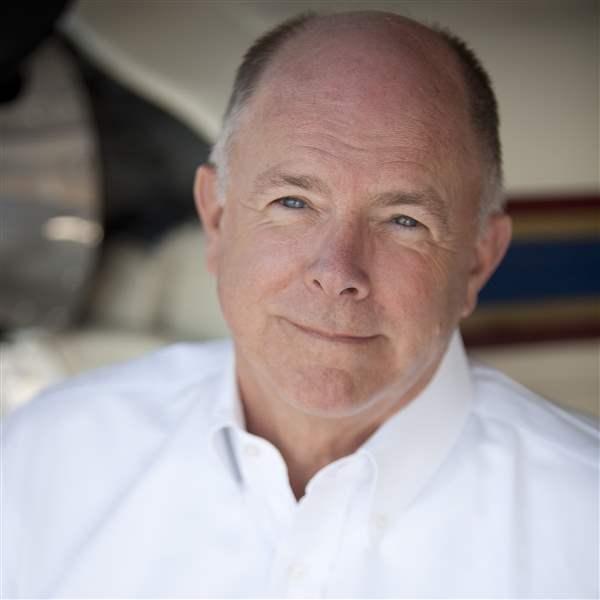Aviation's air-to-ground communications system is in dire straits. In short, we're running out of voice frequencies. Year by year, more and more frequency channels are consumed even though the channel capacity in aviation's VHF communications band (118 to 137 MHz) has increased. But it hasn't increased fast enough. Demand is far outpacing supply.
The FAA says that air traffic control (ATC) alone will claim 300 new frequency slots per year. This is mainly because of the growth of traffic at major airports requiring additional ground control, clearance delivery, approach and departure control, and tower frequencies for various directions of flight or runway assignments. Add to that the growing number of frequencies assigned to airline, AWOS, ASOS, military, airshow, law enforcement, and other uses, and it's easy to see how fast the frequencies are gobbled up.
The FAA has a solution for this problem, and it's due to be implemented in 2010. This is the Nexcom program, and it involves digital communications. Under this plan, voice and datalink transmissions would run at a capacity of four circuits per 25 MHz channel, using high-speed, staggered time-sharing technology. That should solve the frequency allocation problem, but obviously this means that today's radios will have to be phased out, and new digital radios will have to be bought and installed in the general aviation fleet. The FAA has selected Avidyne (for general aviation applications) and Honeywell (for the airlines) to develop Nexcom radios. Tests of prototype radios are now under way.
Oh great, you say, contemplating the purchase of new com radios with yet-to-be-announced price tags. But without AOPA's input Nexcom could have cost you money years sooner. And AOPA has been a key player in supporting an interim plan to squeeze more use out of today's communications radios.
AOPA understands that Nexcom can provide many benefits, and pilots should, too. These include pre-coordination of Class B airspace transitions (no "remain clear" stipulations), anti-blocking capabilities (no more blocked transmissions or frequency bleed-over), datalink transmission of ATC clearances and weather information, and future upgrades via software changes instead of complete avionics swap-outs. AOPA simply wants a smooth transition to the new technology, with plenty of time for equipage to happen through attrition — not mandate. We'll get that time through the frequency expansion provided by the interim plan.
Bear in mind that frequency expansion is not a new thing — and neither is the need to upgrade radios. Through channel splitting, we've gone from 90 to 760 VHF voice channels in the past 40 years. The last channel split was in 1977, when the spectrum was divided up into spacings 25 kHz apart. Another split, to an 8.33 kHz frequency spacing, was mandated in 1996 for aircraft operating in Europe. And each time there's a split, there's the need for new com radios. Like it or not, radio upgrades have always been a fact of aviation life — and one that lets us take advantage of enormous improvements in weather-, safety-, and traffic information dissemination.
The interim plan gives us more frequencies at the same time it buys us time to phase into the world of digital communications. It does this by using frequencies close to those allocated for other purposes. Here are seven proposed areas where "new" frequencies may be found for air traffic control purposes:
- Portions of the channels on the 121.5 MHz band (121.425, 121.450, 121.550, and 121.575 MHz). A potential snag is that the FAA must ensure there will be no interference with emergency locator transmitter or satellite alerting capabilities when using these frequencies.
- Flight service station frequencies 123.6 through 123.65 MHz.
- Subbands of frequencies currently reserved for AWOS, ASOS, and ground control functions.
- The 136-to-137-MHz band segment, which the FAA says could be assigned for discrete use in high-altitude airspace.
- Freeing up airshow frequencies by establishing start and stop dates for their use. At all other times, these frequencies would be used for air traffic control.
- Freeing up frequencies currently used by AWOS and ASOS. These broadcasts would be paired with VOR frequencies, where pilots could monitor them like hazardous in-flight weather advisory service (HIWAS) broadcasts.
- Freeing up 17 frequencies currently used for flight-test purposes by moving them out of the 118 to 136-MHz band.
There are several other recommendations that the FAA has proposed — all of them spelled out in a 53-page document published in September 2001 and titled Radio Spectrum Plan for 2001-2010. To illustrate how fluid the thinking is, one proposal is a not-so-new alternative to Nexcom: another channel split to 8.33 kHz. That may be a good short-term fix, but what happens when this new frequency allocation is depleted? Likely there would be a second upgrade — to the Nexcom plan now being advanced. Why go through two upgrades when one will do?
Stay tuned for the latest news on this issue. Nexcom may be on the horizon, but if AOPA has anything to say in the matter — and it certainly does — then that horizon will be a receding one.
E-mail the author at [email protected].



